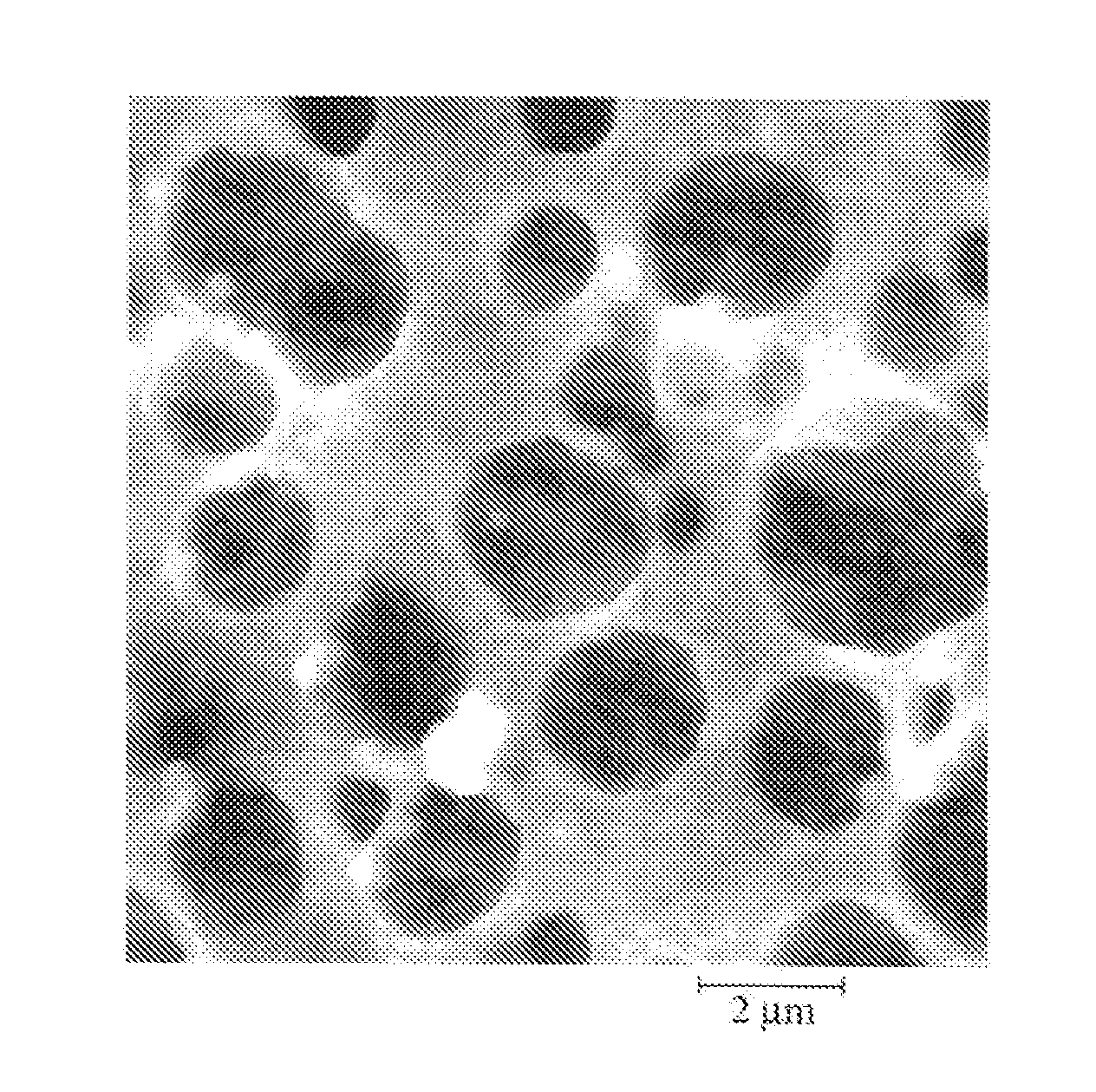Microporous composite membrane and its production method and use
a composite membrane and microporous polyolefin technology, applied in the field of microporous composite membranes, can solve the problems of insatiable conventional microporous polyolefin membranes, low production efficiency, and low permeability of microporous polyolefin membranes at present, and achieves the effects of reducing production costs, reducing production costs, and reducing production costs
- Summary
- Abstract
- Description
- Claims
- Application Information
AI Technical Summary
Benefits of technology
Problems solved by technology
Method used
Image
Examples
example 1
(1) Preparation of Fluororesin Solution in Mixed Solvent
[0089] 2.7 parts by mass of a poly(hexafluoropropylene-vinylidene fluoride) copolymer having a hexafluoropropylene content of about 10% by mass and a melt viscosity of 2,700 Pa·s (trade name: Kynar2801 available from ATOFINA) was dissolved in 73 parts by mass of acetone at room temperature to prepare a fluororesin solution. 75.7 parts by mass of the resultant fluororesin solution was mixed with 24.3 parts by mass of mixed xylene [the total content of o-xylene (dipole moment: 0.44 Debye) and m-xylene (dipole moment: 0.35 Debye) was 80 mole % or more], to prepare a solution of the fluororesin in mixed solvent (mixed solution).
[0090] (2) Formation of Coating Layer
[0091] A microporous polyethylene membrane [trade name: SETELA available from Tonen Chemical Corporation, thickness: 21.9 μm, air permeability: 253 sec / 100 cc, pin puncture strength: 3,028 mN / 20 μm, heat shrinkage ratio: 16% (MD, 105° C. / 8 hrs.), 5.5% (TD, 105° C. / 8 h...
example 2
[0092] A microporous composite membrane was produced in the same manner as in Example 1, except for using toluene (dipole moment: 0.375 Debye) as a poor solvent to prepare the fluororesin solution in a mixed solvent.
example 3
[0093] A microporous composite membrane was produced in the same manner as in Example 1, except for changing the acetone content to 68.1 parts by mass, and adding 29.2 parts by mass of 1-butanol (dipole moment: 1.68 Debye) as a poor solvent to prepare the fluororesin solution in a mixed solvent.
PUM
| Property | Measurement | Unit |
|---|---|---|
| Diameter | aaaaa | aaaaa |
| Electric dipole moment | aaaaa | aaaaa |
Abstract
Description
Claims
Application Information
 Login to View More
Login to View More - R&D
- Intellectual Property
- Life Sciences
- Materials
- Tech Scout
- Unparalleled Data Quality
- Higher Quality Content
- 60% Fewer Hallucinations
Browse by: Latest US Patents, China's latest patents, Technical Efficacy Thesaurus, Application Domain, Technology Topic, Popular Technical Reports.
© 2025 PatSnap. All rights reserved.Legal|Privacy policy|Modern Slavery Act Transparency Statement|Sitemap|About US| Contact US: help@patsnap.com


